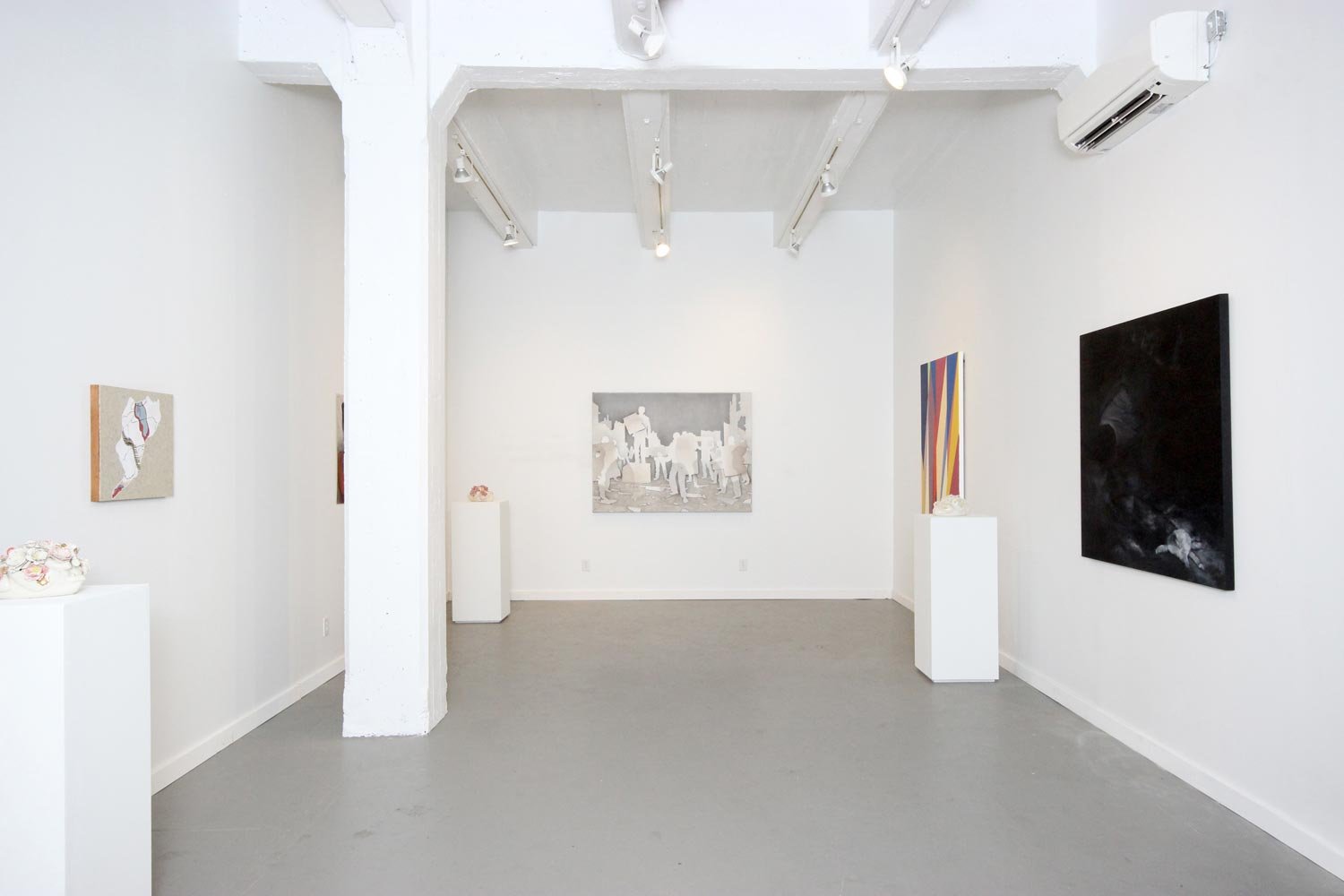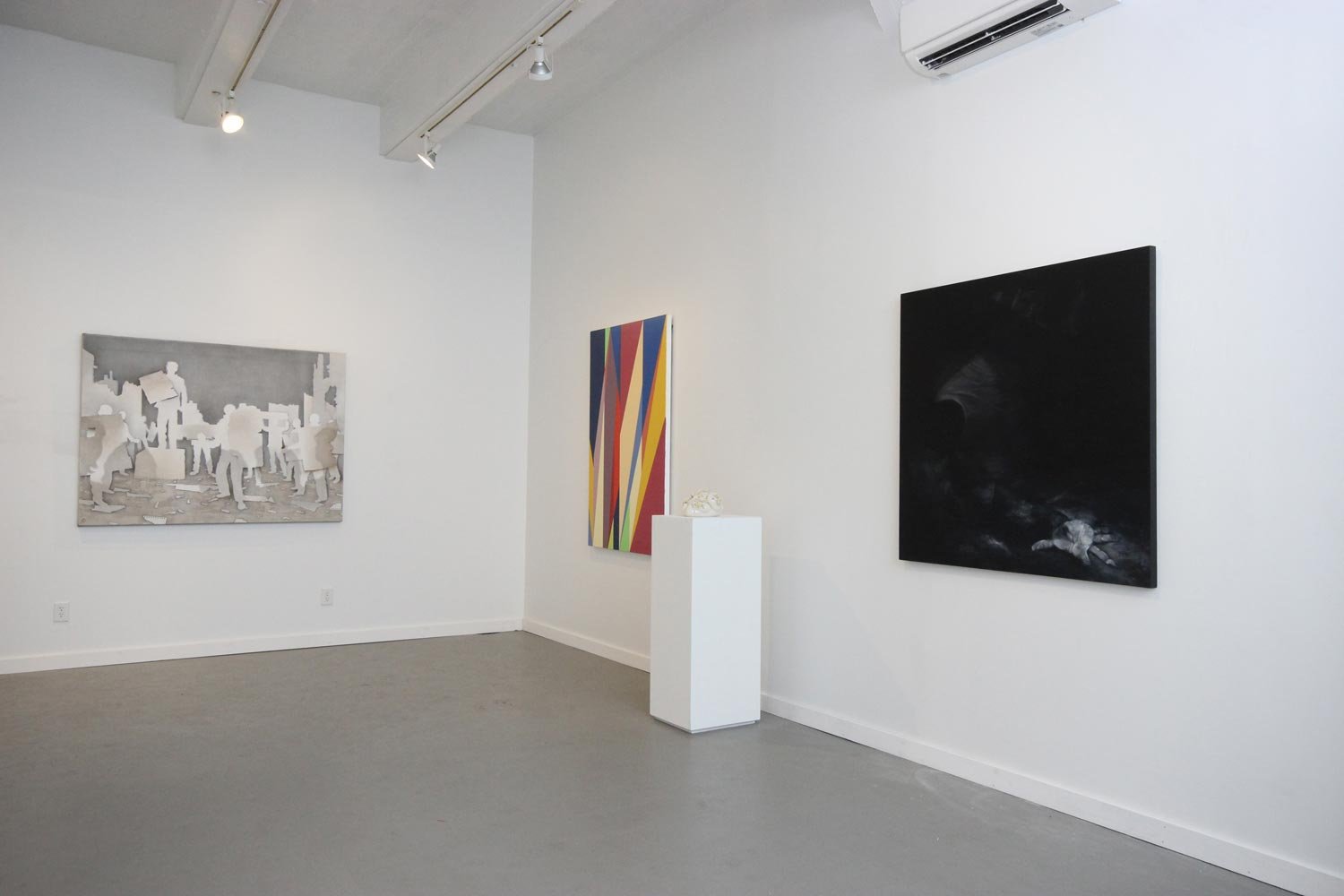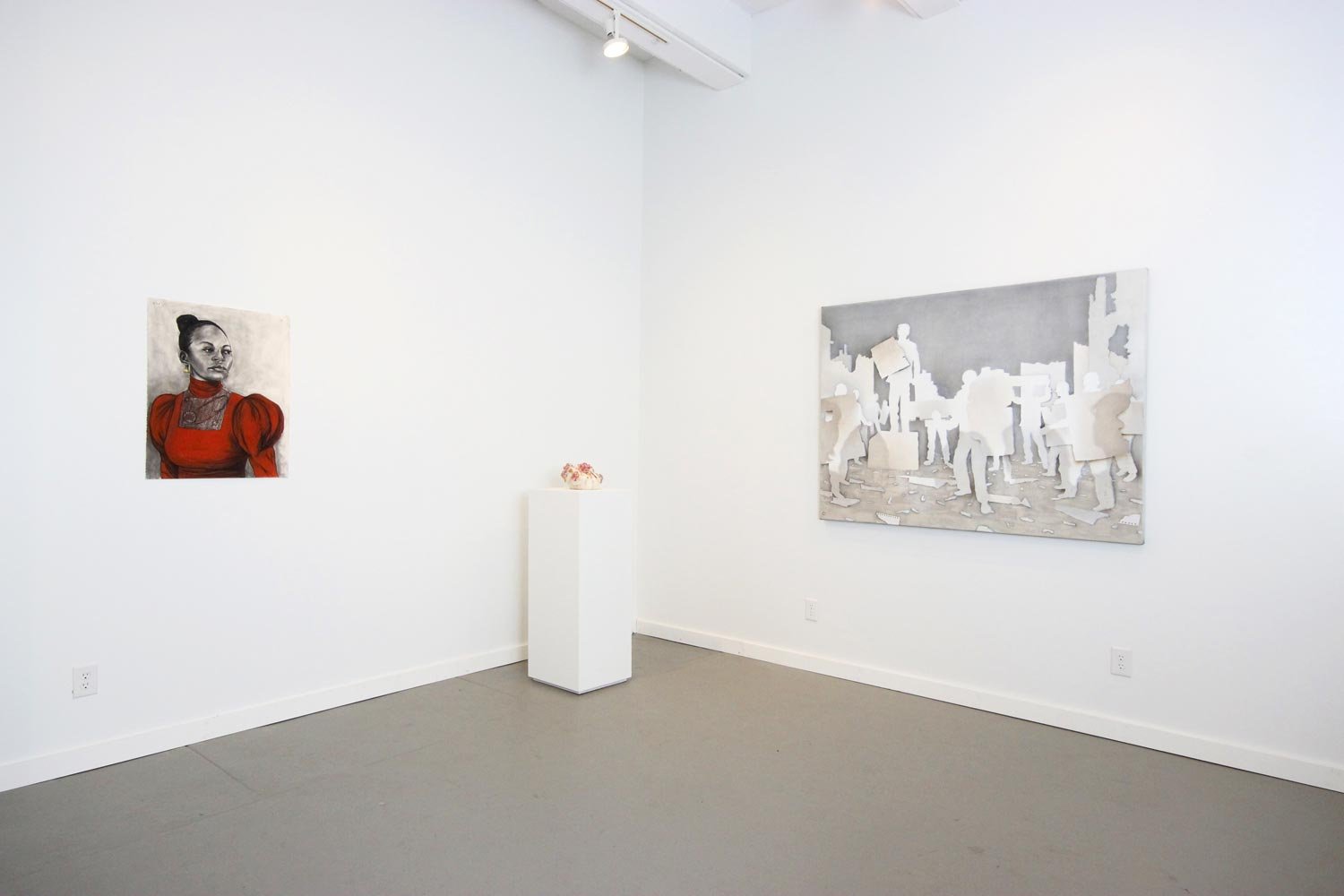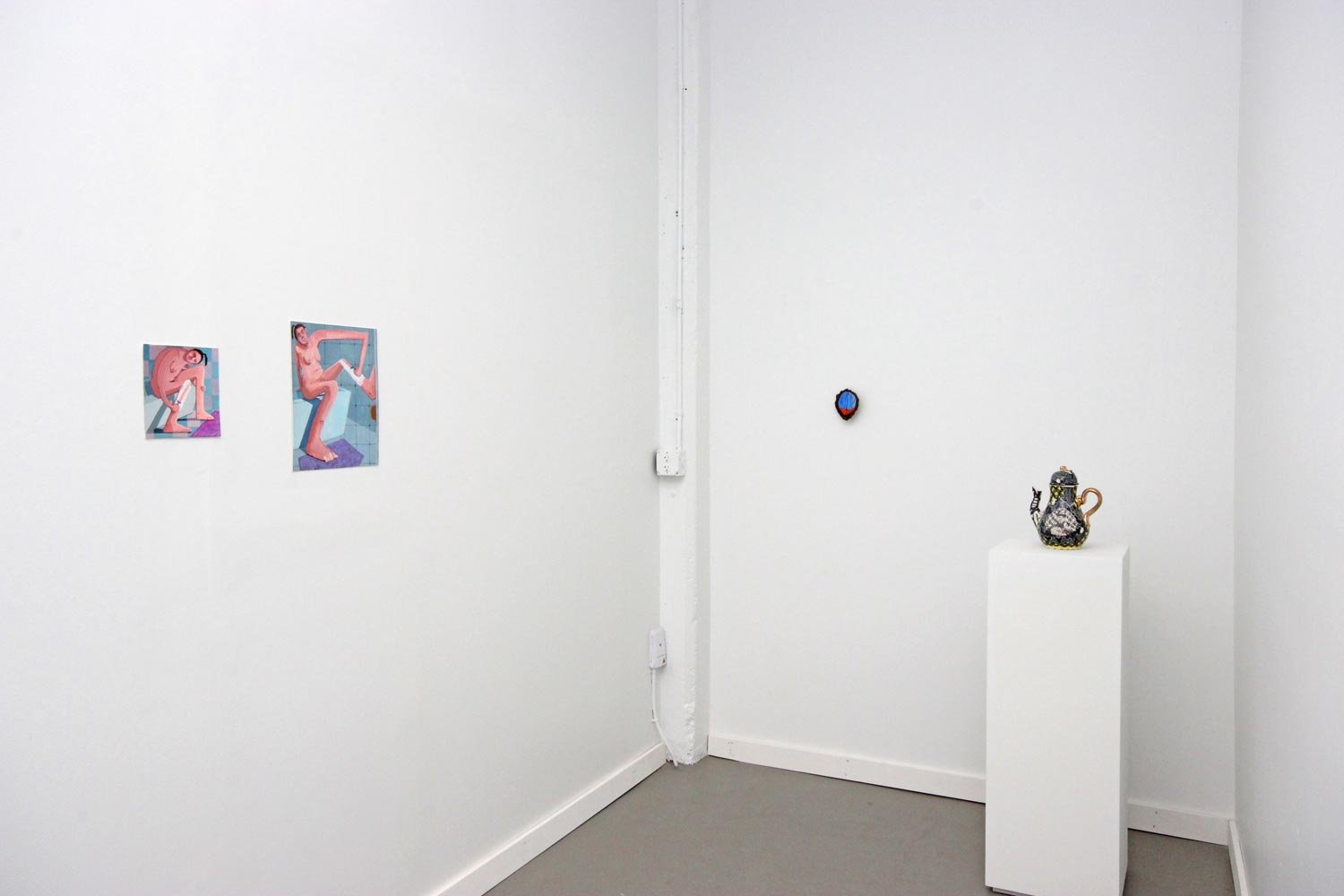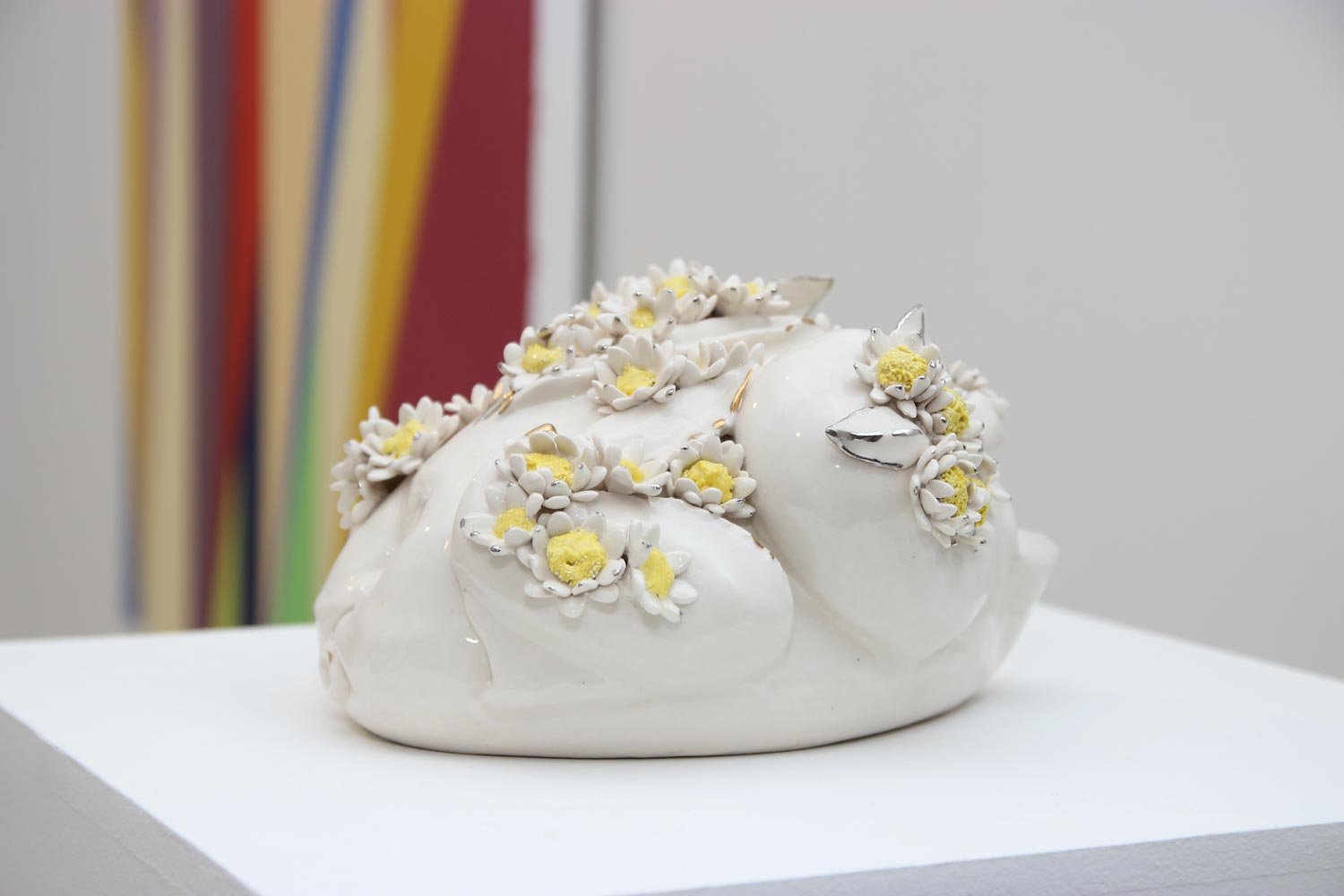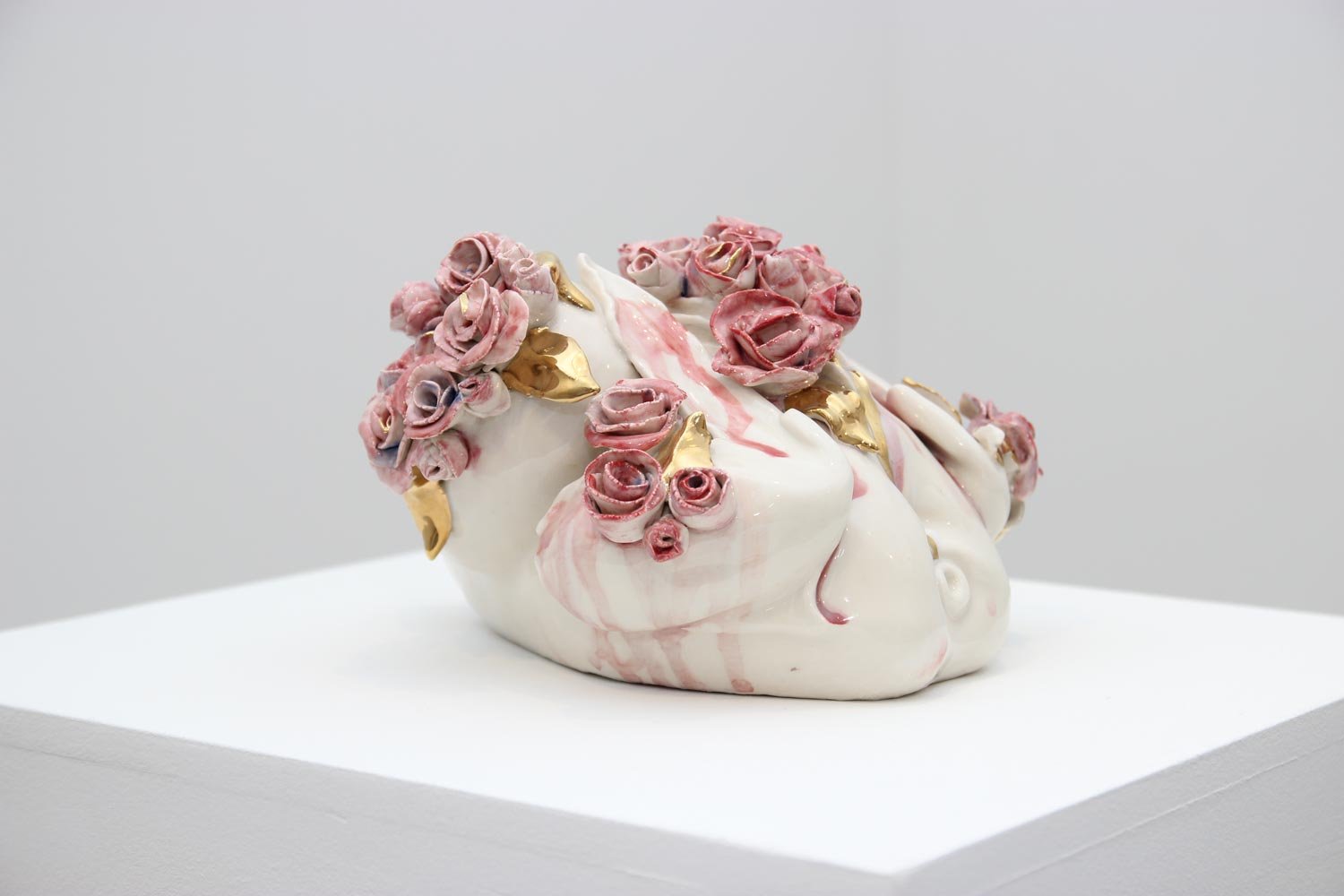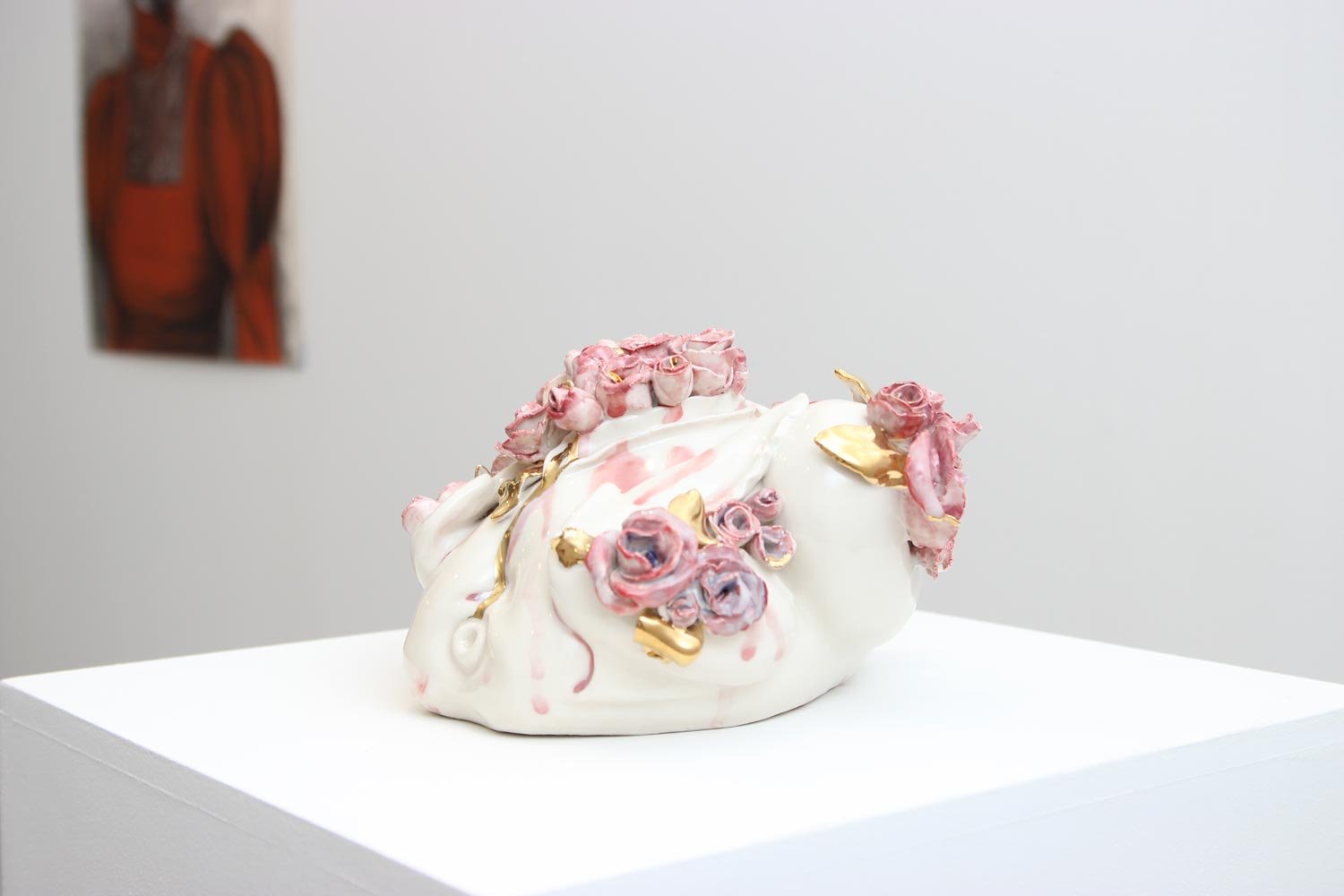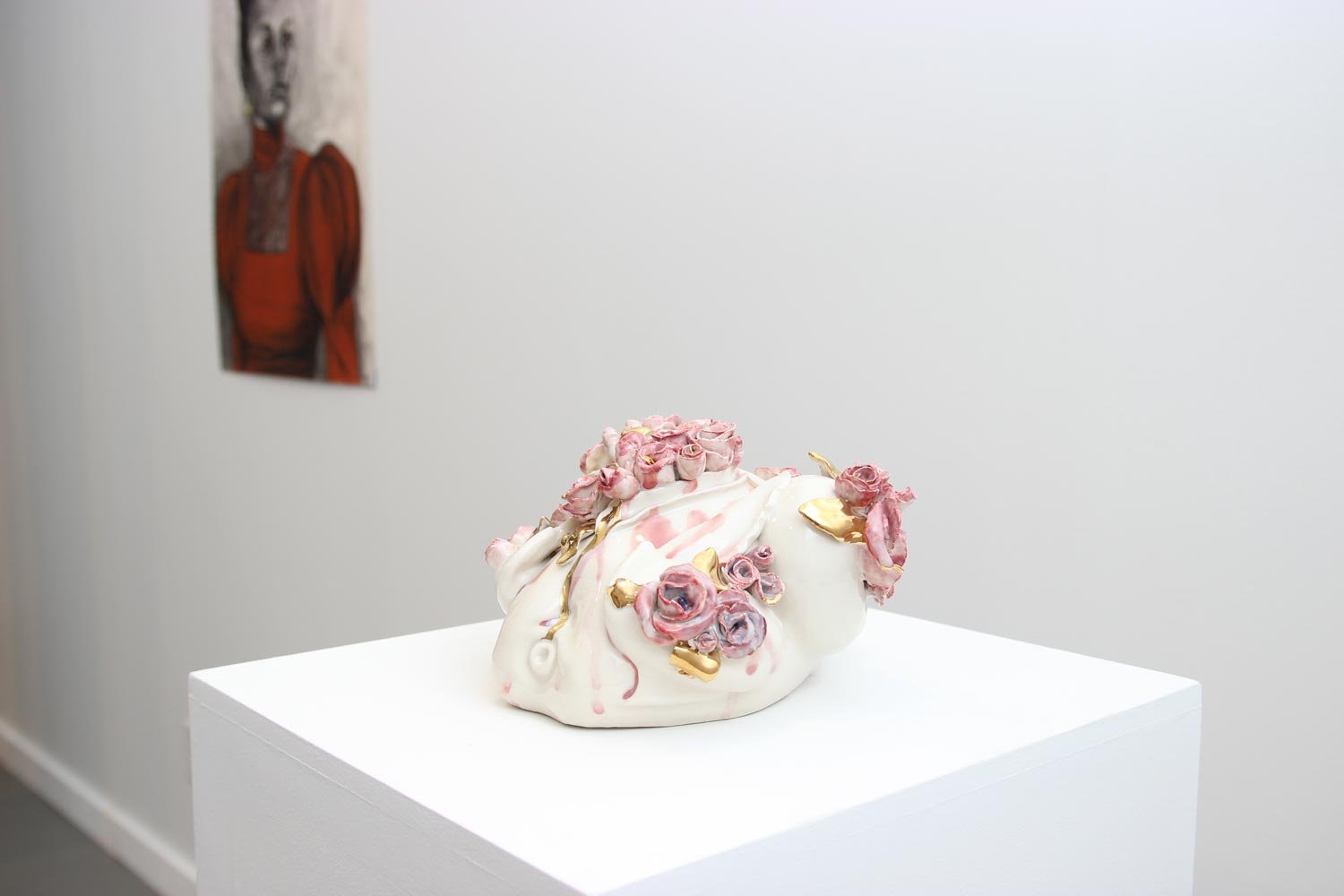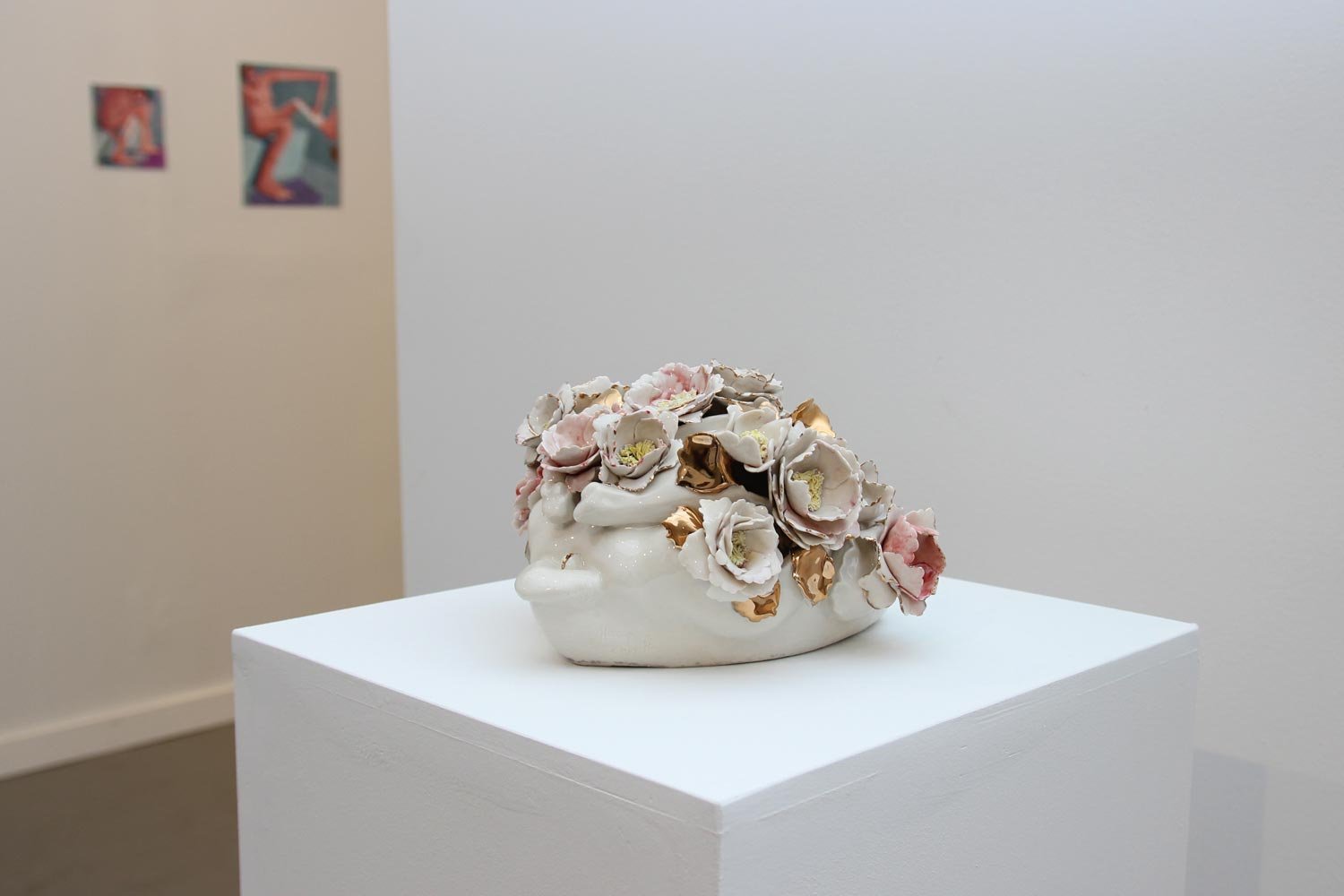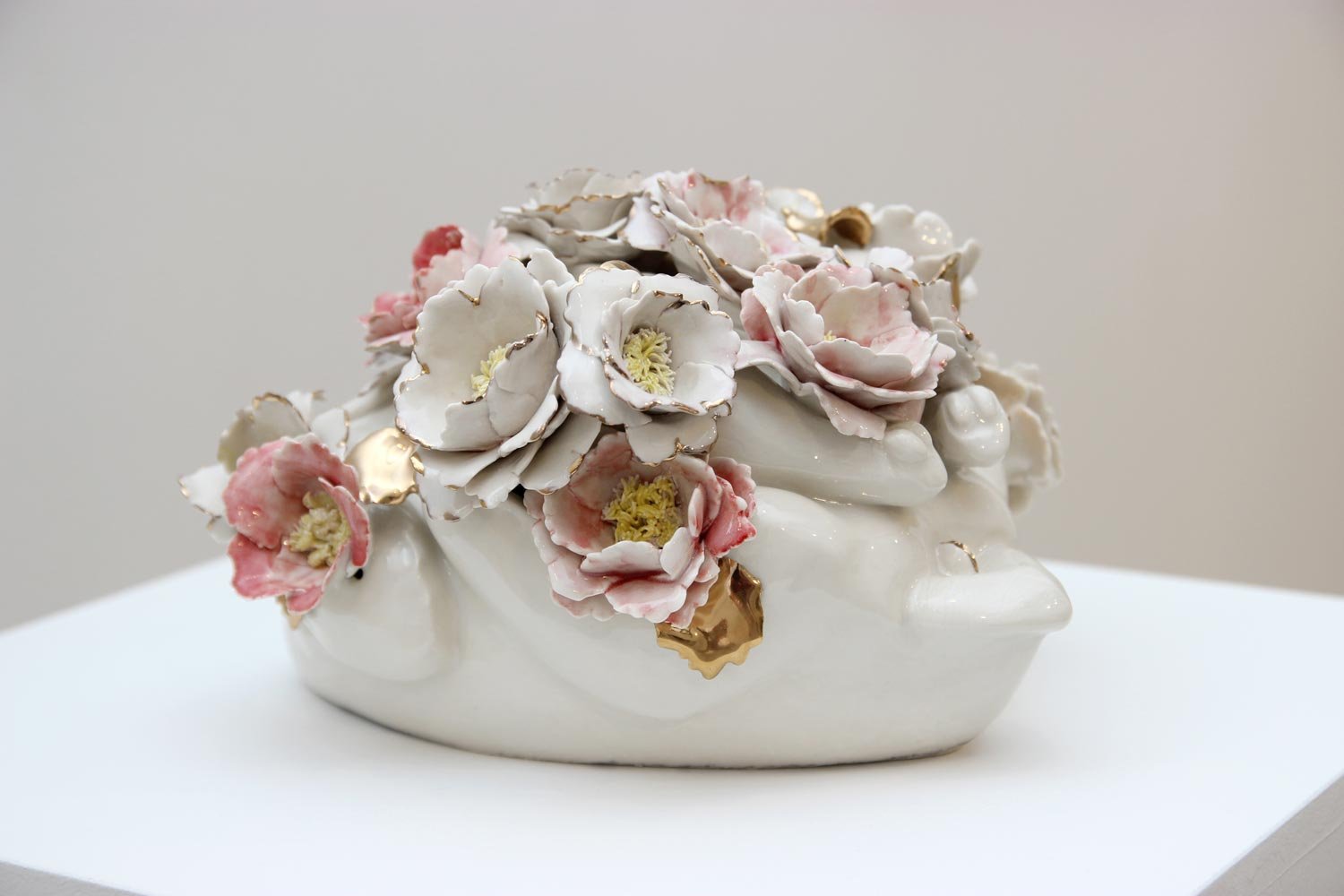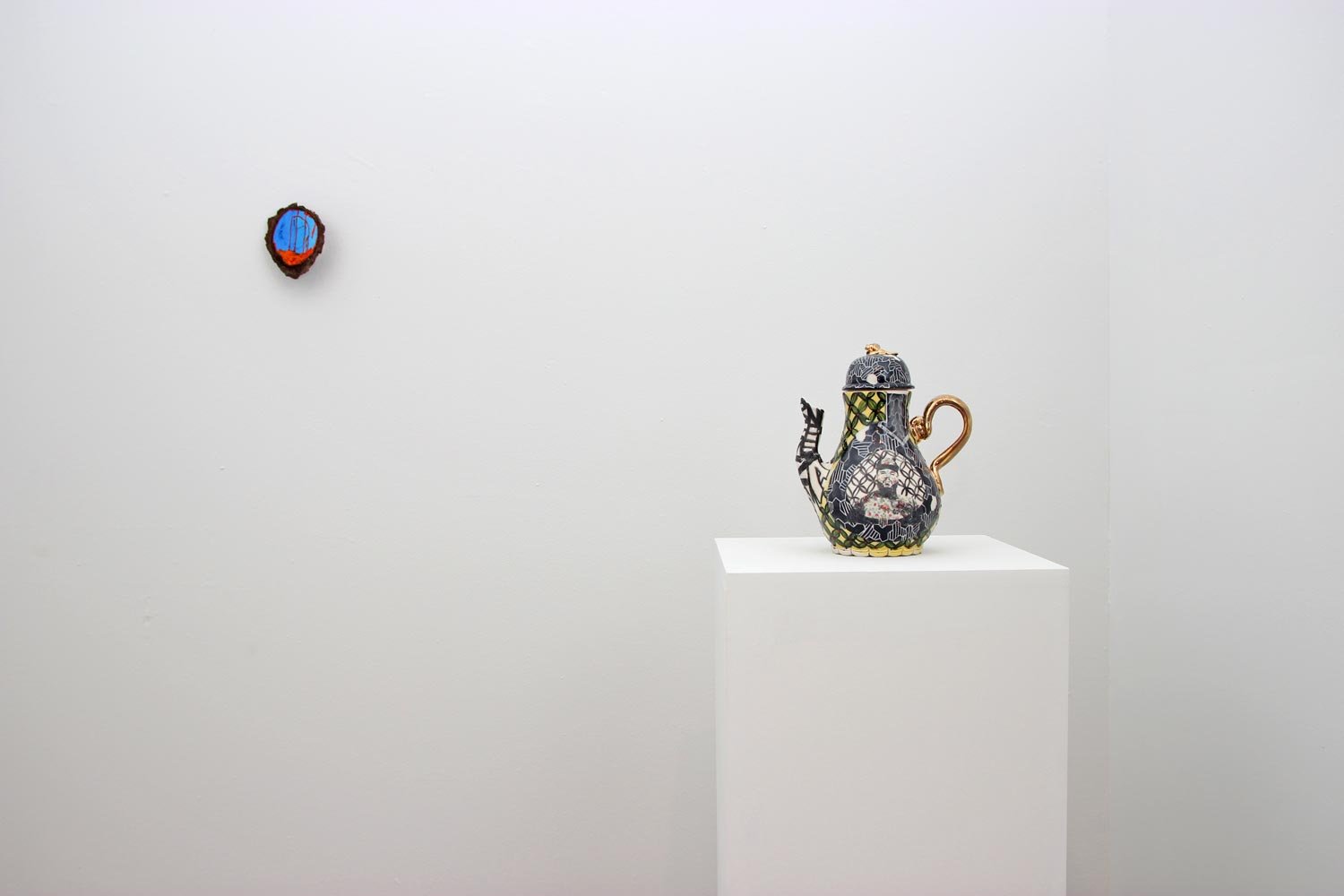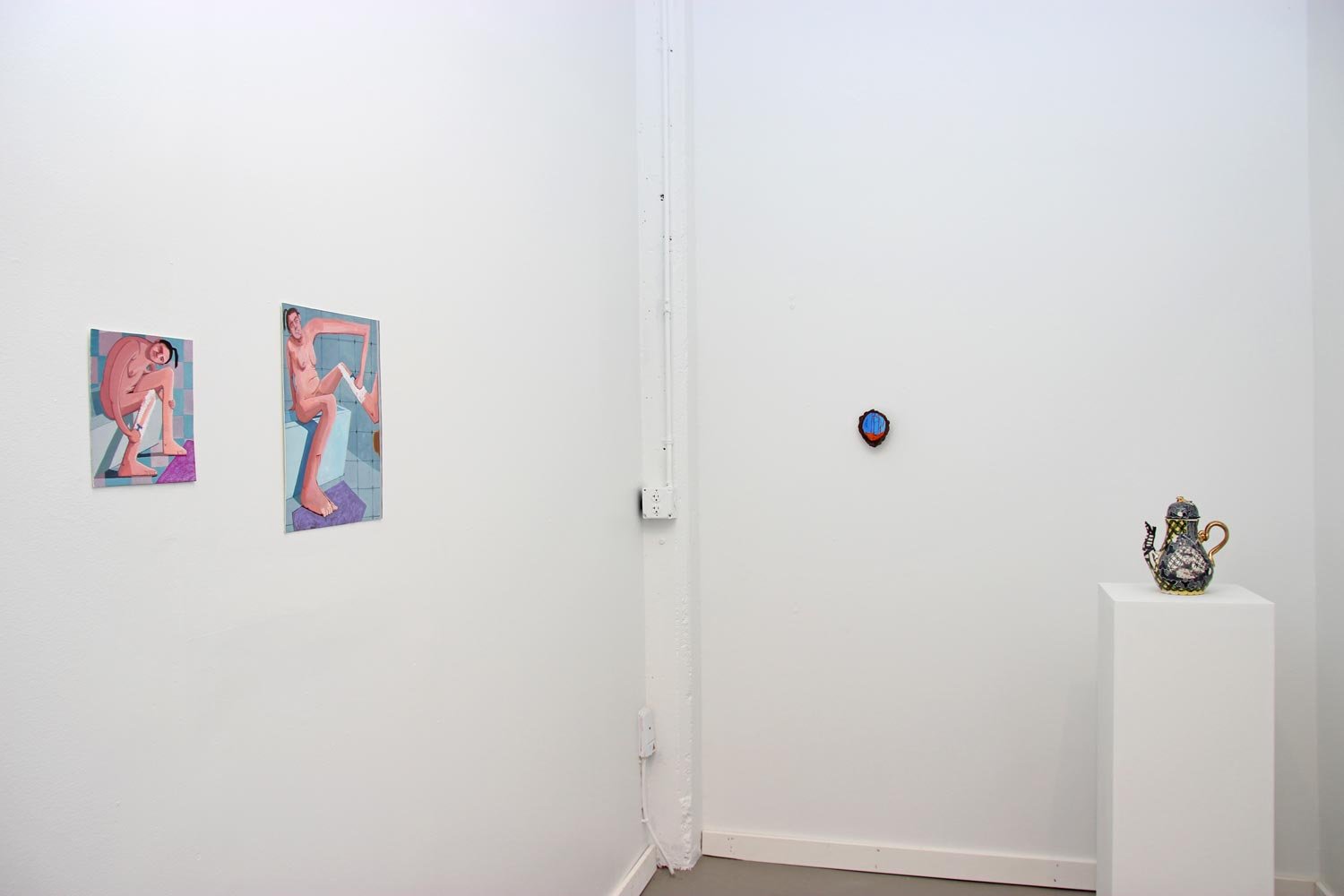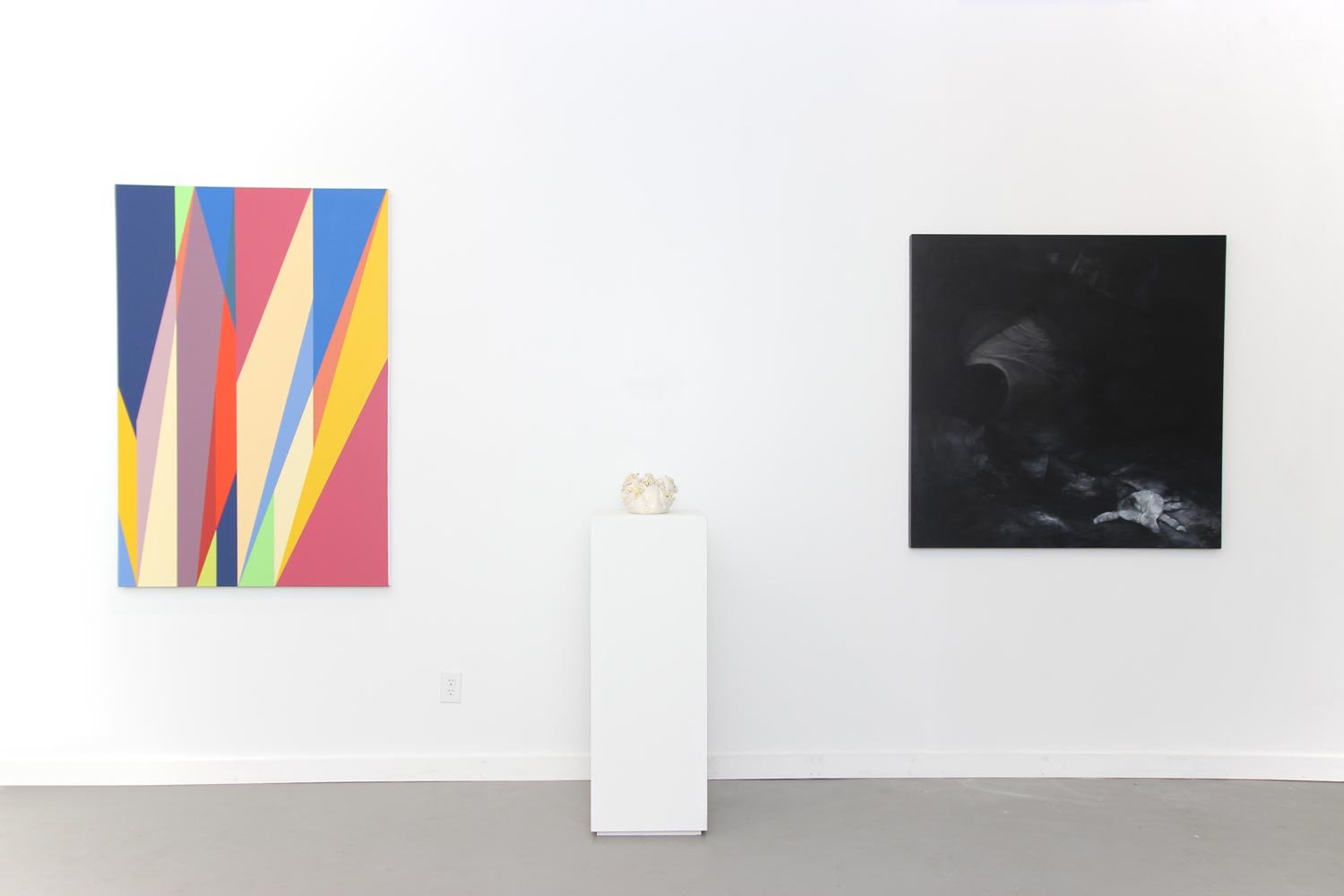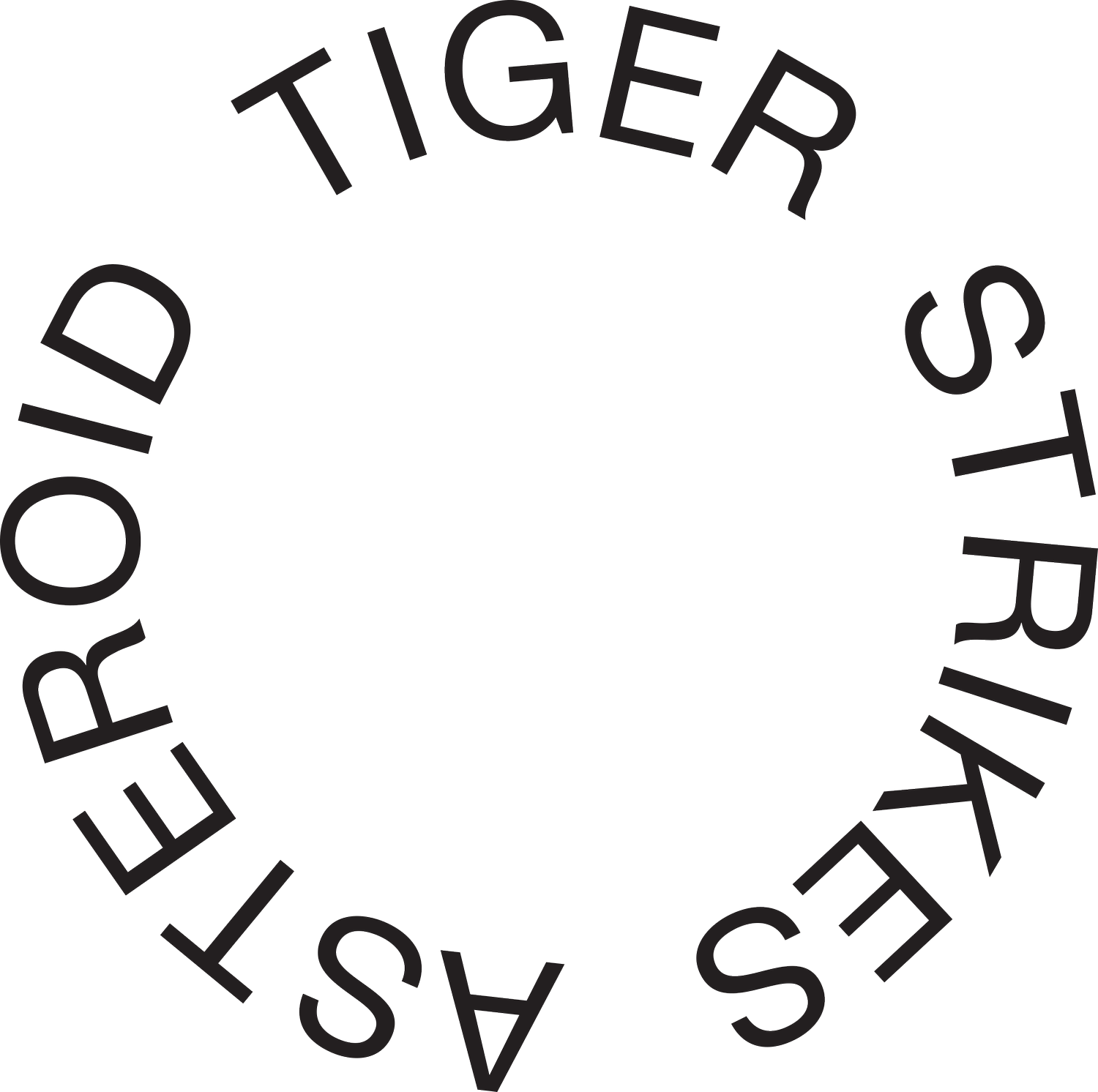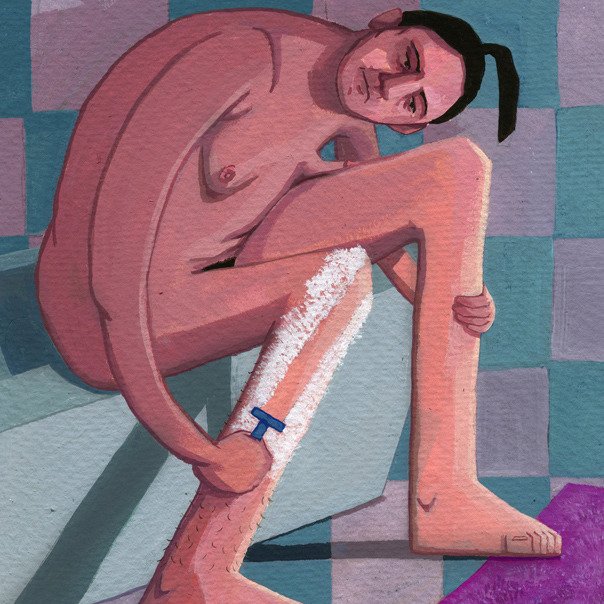PHILADELPHIA
Anachronism and Liberation
Aug 4 - Sep 17, 2017
Opening Reception: Aug 10
Anachronism and Liberation presents nine artists, ranging from emerging to established, creating work that engages with social and/or political issues in subtle and surprising ways. The artists involved are all committed makers, whose approaches offer an expanded vision of what political art pieces that consider issues of imperialism, political oppression, labor rights, environmental justice, race, gender and sexuality can look like. The work deliberately connects to traditional practices and engages in dialog with art history; at the same time, it is powerfully responsive to the urgency of this political moment.
The show’s title refers to the notion of artists simultaneously looking backwards and forwards in their practices, employing the “anachronistic,” the aggressively handmade and historically informed, in service of “liberation,” both in the political sense of the word, and in a more personal, aesthetic sense. The artists’ connection to art history and traditions of making becomes a freeing component in their work, adding layers of complexity and allowing it to transcend beyond sloganeering or propaganda. Their art is suspended between traditional forms and liberatory meanings, in which forms of the past are celebrated, undermined, and re-construed in the effort to construct new futures. They return to traditional media with new purpose, using old resources to open possibilities for reconfigured identities, making ‘nonce’ forms mean something again.
New Orleans-based artist Ana Hernandez is confronted by the architecture of the oil industry on the bayous, gentrification legacies of Katrina, and the destruction of aquifer. We selected The Utica to reveal that our own region is on her mind. Ana’s compassionate reaction to ICE round-ups and fracking of central PA is one in a series Altering Internal Landscapes: In pursuit of unearthing bodies of Energy. She says that it is “a visual representation of ecological trauma; it aims to highlight the dissection and destruction of a physical and psychological landscape, whose vulnerable and shifting body print can be traced and mapped by the scars of injury left on the environment and all who inhabit it.” Ana Hernandez is a founding member of Level Artist Collective, New Orleans. She recently exhibited her work at The Contemporary Art Center of New Orleans, A Studio in the Woods, The New Orleans Museum of Art and she was a recipient of the Joan Mitchell Foundations 2016 Artist-in-Residence Program.
Roberto Lugo lets us see that Graffiti tagging and American pot throwing are connected. Lugo grew up in the Kensington neighborhood of Philadelphia. He is an American potter, social activist, spoken word poet, and educator. Lugo’s work here draws together hip-hop, history and politics into formal ceramics. It is commemorative, like a 19th century Tucker Factory pitcher, but represents both an ending and a beginning, honoring the worker instead of the owner. Lugo has been featured at multiple exhibitions, including SOFA Chicago, solo shows at Eutectic Gallery in Portland, Oregon and Wexler Gallery, Philadelphia. He received the United States Artist Barr Fellowship and the Emerging Artist award for the National Council on Education in Ceramic Arts.
We admire Rebecca Ness’ activism as well as her connected artistic practice. She uses the politically charged imagery to empower both the artist and the viewer. Her work is remarkably straightforward, humorous and biting. It is both a report on our current political climate and a crystallization of a liberating feminism with a long arc. Rebecca Ness is a founding member of the web activist site, In Residence. She has exhibited at Field Projects Gallery, NY; Copeland Gallery, London; Distillery Gallery, Boston; Bergen Street Studios, Brooklyn among many others. She is currently enrolled in the MFA program in painting and printmaking at Yale University.
Odili Donald Odita orchestrates color interaction in pure and visionary leaps. Transformative routes of his palette and shapes begin as a catalog of abstract color that may signify contexts as in flags or represent the visible emanations of the exterior world, architecture of an unsettled, colonized culture. As his new formalism explores figurative historical and sociopolitical realities, his work emerges into a charged coexistence and physical presence. Odita was born in Enugu, Nigeria and lives and works in Philadelphia. He has been the recipient of grants from the McCall Foundation, Joan Mitchell Foundation, and the Louis Comfort Tiffany Foundation. In 2007, his work “Give Me Shelter” was featured prominently in the 52nd Venice Biennale exhibition, Think With the Senses, Feel With the Mind, curated by Robert Storr. He is represented by The Jack Shainman Gallery.
We experience Robert Pruitt’s portraits as a guide to peace. Pruitt draws with charcoal on paper. He selects this medium for its accessibility, its connection to the maker and hand, but also to the viewer’s haptic experience: most of us have had the experience of drawing on paper. His emphatic choices of imagery from science fiction and comic books, together with the history of political and social struggle suggest that we need to change everything, to think in terms of the history of science or fantasy to guide us beyond the killing of each other. Robert Pruitt has exhibited his work at The Museum of Fine Arts Houston, The Contemporary Arts Museum Houston, The Dallas Museum of Art, The Bronx Museum of Art, the 2006 Whitney Biennial, and at the Studio Museum of Harlem. He has held residencies at the Skowhegan School of Painting and Sculpture, ArtPace, Fabric Workshop Museum, and Brandywine Printshop. He has received numerous awards including the Louis Comfort Tiffany Award, the Joan Mitchell Artist Grant, a project grant from the Creative Capital Foundation, and the William H. Johnson Award.
This small wood and paint construction by Lisi Raskin is part of a series of love tokens that the artist has been making since 2015. While the artist spent fifteen years traveling to the Arctic Circle, former East German and Yugoslav Atomic bunkers, and the American west exploring the intersection of nuclear-age fears and utopian mythologies of the Cold War, she now focuses on liberatory practices that attempt to produce and represent the occurrences in the world that she wishes to see, including radical love, collaboration across difference, and redistribution of resources. Raskin has exhibited internationally at institutions including Kunsthaus Graz, Casino Luxembourg, the Frankfurter Kunstverein, the Contemporary Art Center, Vilnius, PS1/MoMA Contemporary Art Center, the Blanton Museum of Art, the Center for Curatorial Studies/Hessel Museum at Bard College, and the Rubin Museum of Art. She has been the recipient of numerous awards and grants including the Guna S Mundheim Berlin Prize at the American Academy in Berlin, a Quimby Foundation Grant, Mayer Foundation Grant, and the Hayward Prize from the American Austrian Foundation.
Han Wang’s ceramic art presents multiple overlapping anachronisms. Wang is a Chinese artist who is living in Philadelphia, PA. Her artistic practice embodies the phenomenon she named “cultural grafting.” Her work explores the history of other cultures using Chinese techniques, and she refers to her new work as contemporary Chinoiserie. Her craft is at such a high level she is able to comment on the history of export porcelain, seduction of the copy, the autonomous artist directly articulating the misconceptions, stereotypes and bigotry with a light, freeing mirror of humor. The chickens on display in this show play with gender stereotypes as well as cultural ones, referencing both the notion of “Three Ages of Women,” and “chicken” as derogatory Chinese slang for woman. Han Wang is an artist in residence at the University of the Arts and at the Clay Studio, and has exhibited at Marginal Utility Gallery, Philadelphia and Gatov East Gallery, Los Angeles.
We see Charles Edward Williams’ paintings as investigations of our inner life. Confrontation III references the human hands that display the request for trust. Concepts for this exhibit were drawn from recent and past incidents of police brutality from corrupt police officials and officers around the United States, and include the inspiration of Artist Gerhard Richter’s The October 18, 1977 series. This image is digitally manipulated from the Death of Eric Garner 2014 and used as a reference for creating the piece. This painting focuses on highlighting hands using oil paint on panel and combining elements of abstractions. This invites the viewer to be challenged and to question the relationship between the subject matter; from the reality to its abstraction. This painting is conceptually referencing German painter Gerhard Richter’s October 18, 1977 series and theoretically responding to archived incidents based on photographs of the arrests, deaths and funerals of members of the radical left-wing German terrorist gang. Recent solo exhibition of Williams’ work have been at Morris Museum of Art, Augusta, GA; Winthrop University Art Gallery, New Gallery of Modern Art \Charlotte; Central Piedmont College Art Gallery and Morton Fine Art Gallery, Washington, DC.
Alexi Worth’s subtle and coherent paintings using trompe l’oeil and cubist space are insistent on an idiosyncratic first-person point of view. A small body of work depicting the Arab Spring uprising comes from his comprehensive grasp of crucial political events and personal connections that his journalist brother Robert recently published: “The Middle East in Turmoil, From Tahrir Square to ISIS.” Alexi shares his own experience both visually and viscerally. Crafted with care and humility, the painting here establishes through a human connection to the viewer and our own efforts at freedom. Alexi Belsey Worth has had solo exhibitions with the Elizabeth Harris, Bill Maynes, and DC Moore galleries, among others. He has received awards from the Guggenheim Foundation, the Tiffany Foundation, and the New England Foundation for the Arts. As a writer, Worth’s exhibition reviews and articles have appeared in Artforum, Art in America, The Brooklyn Rail, The New Yorker, T Magazine, ARTnews, Art New England, etc.
Guest Curator and Essayist:
Jane Irish
Irish’s work is in the collections of Philadelphia Museum of Art, Hirshhorn Museum and Sculpture Garden, and the Pennsylvania Academy of Fine Arts. Locks Gallery, Philadelphia has presented numerous solo exhibitions since 2007. She has been the recipient of awards from Pew Fellowship in the Arts, the Joan Mitchell Foundation, the Pennsylvania Council of the Arts, Independence Foundation, Creative Artist Program Service (NYFA), and the National Endowment for the Arts.
Crispin Sartwell
Crispin Sartwell is a writer and philosopher, teaching philosophy at Dickinson College in Carlisle, Pennsylvania. Publications include Act Like You Know: African-American Autobiography and White Identity (1998); Six Names of Beauty (2004); Against the State: An Introduction to Anarchist Political Theory (2008); Political Aesthetics (2010); How to Escape: Magic, Madness, Beauty, and Cynicism (2014); and Entanglements: A System of Philosophy (2017).
